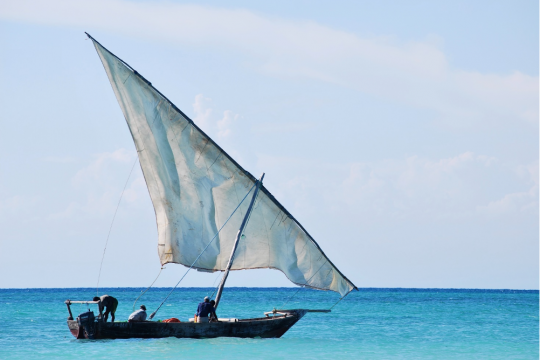Technical Report
prepared by Environment for Development (EfD) for the Swedish Agency for Marine and Water Management (SwAM) and Food and Agricultural Organisation (FAO)
Marine Spatial Planning (MSP) is a strategic process for spatial planning of the use of the sea designed to bring about sustainable development of the “blue economy” through ecosystem-based management[1] and sustainable ocean governance (Douvere, 2008; Ehler & Douvere, 2009; Agardy, 2010, Schaefer & Barale 2011). A recurring critique of MSP is that it tends to be sector focused and fails to take all the complex social issues around space into account, such as the value of certain areas for marginalised groups (Flannery, Healy & Luna, 2018). MSP decisions are often accused of being centrally driven, favouring stakeholders that are resource strong and influential (International Monetary Fund, 2007; Jones, Lieberknecht & Qiu, 2016a; Flannery et al., 2018; Tafon, 2019; Saunders et al., 2020). MSP can thus have negative impacts on vulnerable social groups that largely depend on marine resources for their food security and livelihoods.
The Swedish Agency for Marine and Water Management (SwAM) is supporting the implementation of MSP in the Western Indian Ocean (WIO) region and aims to have a regional approach in its MSP work. SwAM has recognised the potential risk that MSP fails to address the needs of society as a whole. With support from SwAM, Turpie et al. (2022) have developed a framework for incorporating poverty and gender perspectives in MSP. This involves incorporation of a Social Sustainability Framework into the overall approach, and the use of metrics and indices of relative poverty/prosperity and gender equality that are based on Sida’s multidimensional poverty framework.
If following international guidelines for MSP, such as IOC-UNESCO’s step-by-step approach, it can be a lengthy process (Ehler & Douvere, 2009). The approach involves a preparatory phase in which baseline data are collected, followed by an analytical phase in which alternative planning scenarios are evaluated. The next phases involve the development of spatial and management plans, the monitoring and evaluation of their impacts and adaptation of the plans as necessary. This report provides a pilot case of baseline data collection to better understand local communities’ dependence on marine resources and other livelihood activities, with emphasis on understanding the role of marine spatial zonation and resource management on poverty and gender equality, and developing replicable methods to quantify these.
This case study is one of three studies undertaken in selected coastal areas of Kenya, Tanzania, and Madagascar. A total of 490 households were surveyed by a group of trained enumerators in the vicinity of three large coastal bays in Sofia and Boeny in Madagascar during December 2021. This information was supplemented by 14 focus group discussions and key informant interviews. The methodology for this study and the overall analysis of poverty and gender metrics is provided in an accompanying report by Turpie et al. (2022). This report provides the detailed results of the baseline survey undertaken in Boeny and Sofia, Madagascar.
[1] This entails adherence to the Malawi Principles. http://www.fao.org/3/y4773e/y4773e0e.htm


